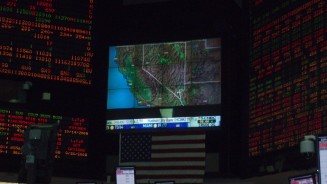Nous avons déjà mentionné dans la première partie de cet article que, comme c’est souvent le cas sur le web, tout à fait par hasard, les clicks successifs vous amènent vers l’article publié par un banquier dans son blog. Son sujet paraissait intéressant, il donnait envie d’y réfléchir. Pour que nos réflexions soient compréhensibles à l’auteur du blog, avec lequel nous avons engagé un échange épistolaire, exceptionnellement, nous faisons cet article en anglais.
In his blog post the author makes an attempt to present the history of “really independent” funds. He talks about their creation on the US market in 1980s, their flourishing development in 1990s, and their consolidation in the first 6-7 years of 2000s. Unfortunately, the real picture is quite different:
- The first mutual fund has was created in the Netherlands in 1774;
- It was followed in 1868 (among the most known ones) by the London-based Foreign & Colonial Government Trust;
- Mutual funds appeared in the US in 1890s and became very popular in the 1920s with the first open-end fund, the Massachusetts Investors Trust, created in 1924;
- After the great crash of October 1929, the fund industry had a mitigated period till the midst of 1950 (Dow Jones returned to its pre-crash level in 1952).
- Development of new products boosted dramatically funds’ growth in the 1970s: introduction of money market funds (a bonanza within a high inflation environment), and introduction by The Vanguard Group of the first index fund.
- Fund industry was at its best growth in 1980s-1990s, the period of the flourishing economy and rapidly developing financial engineering: creation of international and target-date funds, of 401(k) plan, Individual Retirement Accounts (IRA), etc. Even today funds account for almost 20% of the US household financial assets.
Being exact, the evolution the author really has described through the periods of 1980s-2007 (without noticing it) is the one of the neoliberal economy in its modern state.
There is nothing wrong with the classical theories of neoliberalism. It has been conceived as a beautiful structure, so as the classical Marxism. Unfortunately, between any beautiful theory and its real incarnation there is always a large gap, created by something called “human factor”.
Appearing in the 1930s, neoliberalism was conceived by European scholars as a “third way”. It was supposed to be an alternative between soviet collectivism with the extremely centralized planning and classical liberalism, which was transformed by that time into a total “lassez-faire” that resulted in a Great Depression. The concept of neoliberalism was involving “a priority of price mechanism, a free enterprise, a system of competition and a strong and impartial state.” It has been successfully used during the post-World War II reconstruction of Western Germany; the overall case got the name of “German miracle”.
Nevertheless, during the following years the last words of the conceptual definition of neoliberalism (“a strong and impartial state”) disappeared. The “shortened” concept started to be implemented in the US economy, with the most active period that happened during the presidency of George H. W. Bush (1989-1993). And then… neoliberalism found itself in the same trap as classical liberalism before it.
As for classical liberalism, it was created in the XIXth century by Adam Smith, Jean-Baptist Say and others like David Ricardo. These English & French gentlemen belonged to certain circles where “gentleman agreement” or “the word of gentleman” was more sure than any law, where the unwritten rules of conduct where respected. If any intruder/predator, acting without regards to any law happened to appear within these circles, he was immediately moved aside, excluded from the good society, because he was not behaving “as a gentleman”. Therefore, the “thinking framework” of the authors of classical liberalism allowed believing in a society with free trade, property rights and liberal economic development, with prices regulated by the utility, and with wages proportionally distributed. All this was supposed to happen, because everybody would behave like a gentleman. This last fact is a major component of classical liberalism, so as of neoliberalism: these theories (as many others, of cause) presume that people behave themselves in an economically rational manner. Today anybody who read “Nudge” or similar publications knows that it’s not what happens in real life.
Similar basis was put under the neoliberal theory of modern scholars. Unfortunately, in today’s world we don’t live in a “gentleman society”. The fact is that since 1980s we were living mostly in “lassez-faire” near-savage liberalism, guided by the law of the survival of the fittest. This rule didn’t have very serious consequences, because the global economy was booming (in spite of a few economic “setbacks” here and there). During some twenty-seven years everybody took advantage of the economic growth, consciously (as major economic & financial player) or unconsciously (as an average Joe, Pierre or Mary). The money was easy, the revenues were growing, the credit was accessible, and one had the access to more than one earned. The neoliberalism machine worked almost perfectly.
The only fact that was missing in this machine is that usually, before its sales / implementation, every machine/system is tested under the stress, in order to know what happens when something goes wrong, when certain malfunctions appear… Just think about the number of crash tests for each new car model conducted by GM, VW, and other Renault. Yet, we live in a world when all political and business leaders implement the strangest economic models that have never been tested through the adverse factors. The only difference between the dysfunction of an economic model and a car accident is that after the “crash” of a new economic model we usually don’t die instantly (a part of a case of dictatorship), but we generally suffer more. There are also more people suffering from the accident within economic theories than from the car accidents.
Therefore, after almost twenty-seven years of prosperity something started going wrong, some dysfunctions appeared in the neoliberal economic system. It was the case, where as soon as something got stuck, the entire system collapsed. Only predators, who always existed but who were mildly harmful during good times got through. On their way to survival they destroyed whatever needed, and ate whoever happened to be on their way. And it doesn’t matter how strong, smart, well-educated, powerful and handsome you seem to be right now, there is no guarantee that the next victim won’t be you.
This is the main reason why “a strong and impartial state” is necessary: someone has to fix the rules of the game and, above all, someone has to oversee that these rules are respected.
Leaving aside this historical “aparté” on economic theories and returning to our analysis of financial market flows, we see that the evolution of mutual funds between 1980s and now, described by the author, corresponds exactly to the flourishing period of neoliberalism and to… what we have now. The article seems to show some notes of regret about “the good old times”. Nevertheless, let’s give up all regrets: as we have mentioned before, there is always a significant gap between any beautiful theory (neoliberalism, Marxism) and their real implementation. Therefore, let’s step into the real world.
The real life makes us guessing that for the reasons we mentioned before, the stock market in its actual form will eventually disappear. It has less and less logic and vision for an investor, without mentioning its complete disconnection with the real economy. It will potentially be replaced by some purely electronic quotation system.
As the author notices, todays volumes of trades at NYSE are among the lowest in history. The reasons why public interest for the financial markets is so insignificant are the same that will lead to its extinction. One additional reason is that the markets don’t provide real risk anymore. “Real” means “real life”, allowing to make tangible bets, like during the horse ride or box championship. Take, for example, investments in really risky new technologies. You won’t find them on the financial markets. For those who will try to argue that Facebook and Twitter are listed, we may answer that there is nothing technologically new in any of them, they only found new uses for existing technologies.
While introducing certain pieces of the neoliberalism puzzle into the British economy, Margaret Thatcher noticed that players such as hedge funds brought liquidity for the new market entrants, and allowed them to grow and not to be eaten by bigger players trying to keep their dominant position. Since then, risky investment funds became purely speculative funds investing not into a new product with high risk/return ratio, but into financial products completely disconnected from real life. It’s a global problem of the excessive “financiarisation” of the markets which were initially conceived as an instrument of the real economy’s financing.
Recent years have shown that the point of view of markets fundamentalism stipulating that the markets can be auto regulated is not correct. It just doesn’t work. The governments stepped into the markets to regulate the cash coming from savings / investments of an average Joe. The author notices that almost 90% of the current financial market is represented by the Too Big to Fail and other structures are more or less affiliated with Central Banks. This situation is as dangerous as the one with markets fundamentalism: the huge players may decide among them, without asking anybody, what represents the happiness for “people” (we saw it many times during the last century). In addition, there is another danger in the current market with “only big, government-related” players: systemic risk. The bigger the player is, the more risky it becomes and the more this risk can impact the overall system.
The solution is certainly somewhere in the middle: governments have to leave liberalism to the system in order to liberate an individual initiative. At the same time they have to stay as game -keepers and to puncture a sufficient (it means large enough, such as a half of the profits) amount of taxes in order to manage systematic risk, assume the risk of the individuals that become unemployed when corporations disappear, etc.
As for the financial system’s cleaning up after the 2008 crisis, Americans managed it in a more pragmatic and efficient way than the Europeans did. The first ones proceeded step by step, cutting and separating the structures they considered right to, with and without official announcements. The last ones invented a monster called Basel III. But this is a topic for another story.








